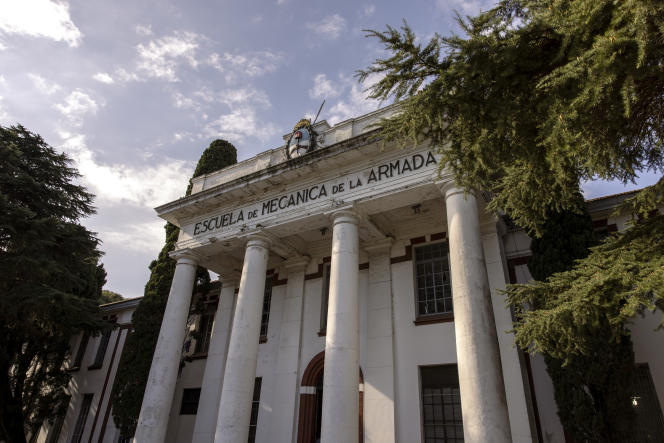Legendary Argentine football club River Plate announced the deal “historical” In a video : “Our projects continue to grow, unstoppable. » Images show, one kilometer from the famous Monumental stadium, in Buenos Aires, a seven-hectare site where six football fields, one hockey field, a village hall… Problem: the site in question was the sports field of the School of Marine Mechanics, ESMA, a clandestine detention and torture center during the dictatorship (1976-1983) where around 5,000 opponents disappeared. The place would have been used to bury or burn bodies.
River Plate’s decision to use land with such a painful history, ceded to it by the state, has caused a stir in associations of survivors and relatives of victims of the junta who say they were not consulted. . “It endangers knowledge about truth and memory”, denounces Carlos Loza, one of the few ESMA survivors and member of the Association of Disappeared Ex-Inmates.
Two appeals requesting the annulment of the decision have been presented to the courts by human rights organisations. “There can be no recreational activities in a place that has been part of a system through which the most heinous crimes have been committed,” they denounce. The first appeal has already been rejected.
Future “systematic and exhaustive” excavations
While most of the detainees at ESMA were killed during “death flights”, thrown into the ocean from a helicopter or an airplane, numerous testimonies suggest that some, in particular those who succumbed to torture, were buried or cremated on the sports field. “I learned that from the ESMA, we were transporting the bodies of deceased prisoners to the sports field (…), has, for example, testified Corporal Jorge Carlos Torresin 1984. Once, I heard the non-commissioned officer on duty say that they had just come back from having a “barbecue”, as the cremation of corpses was called. At night, you could see the fires burning the bodies. »
Since 2004, the site, which still depends on the navy, could not be modified. A measure taken following a request from the artist Leon Ferrari, who suspected that his son Ariel, kidnapped in 1977, had been buried there. It is possible that such was also the fate of the writer and journalist Rodolfo Walsh, killed on March 25, 1977 in the street but whose body was never found.
You have 57.07% of this article left to read. The following is for subscribers only.
